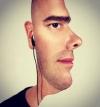| Online: | |
| Visits: | |
| Stories: |
How to Use Platelet-Rich Plasma to Restore Your Hair
Hair loss is one of the more distinctive signs of aging. For both men and women alike, thinning and lost hair can be a source of anxiety and distress. Hair follicles naturally grow dormant, become injured, or die over time, but that doesn’t mean they’re lost for good. Platelet-rich plasma (PRP) therapy can help by using your body’s own repair mechanisms to restore and rejuvenate your scalp.
How PRP Helps Heal Your Head
Hair follicles go through several growth and dormancy phases over your lifetime. One of the things that turn a dormant follicle into an active, growing one is a growth factor. Your blood contains several of these—called platelet-derived growth factors (PDGFs)—and their role is, unsurprisingly, to promote growth and healing throughout the body. The tricky part is that PDGFs are not always present in large enough quantities to affect a dormant follicle. This is where PRP for hair growth comes in.
Much as when using it to treat your skin, PRP therapy for hair restoration begins by drawing blood and spinning it in a centrifuge (a device used in labs to separate substances). This separates out the components and results in a highly concentrated solution of PDGFs. The solution is then injected into your scalp in a few targeted areas.
Once the injection is given, science takes over. First, your skin has just been injured (by the injection) and a large amount of growth factors have appeared on the scene. This causes the healing mechanism to kick into overdrive and begin mending any damaged hair follicles. If the follicle is not injured and merely dormant, the growth factors will wake it up and begin a new growth phase.
Keep in mind that a platelet-rich plasma treatment is an effective hair restoration option but not a fast one. By making use of your body’s own mechanics, you are tied to your body’s own pace. It can take a few sessions for the full effect to be realized, but you will need to get assessed by a skin and scalp specialist to receive a more precise estimate. The duration of treatment is influenced by a number of factors including personal biology and severity of hair loss.
After-effects
Since it is done using your body’s own platelets, PRP therapy has no chance of rejection. However, since the platelets are delivered by sticking a needle into your scalp, some redness and swelling around the injection site is not uncommon. This should go away within a few days.




